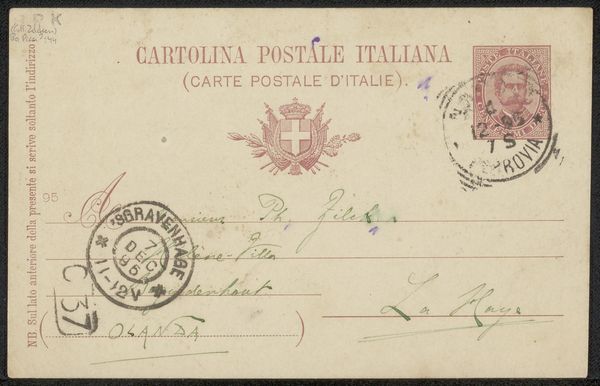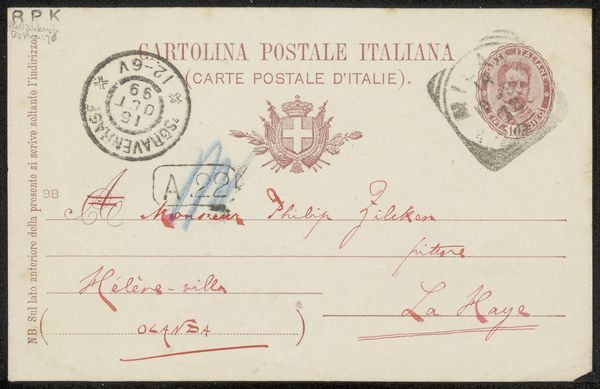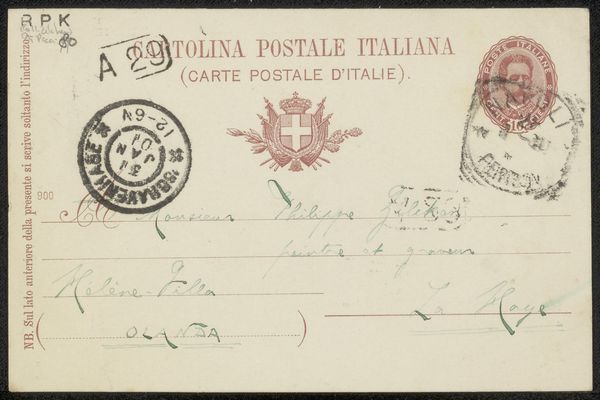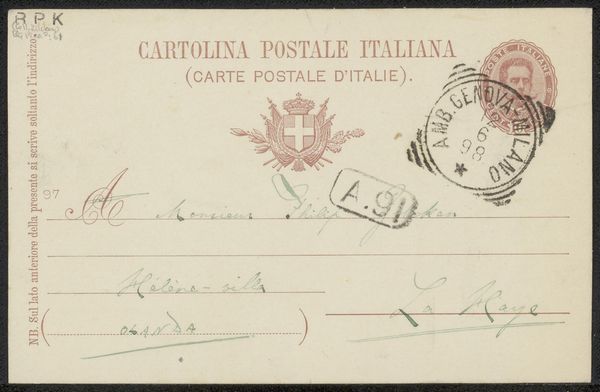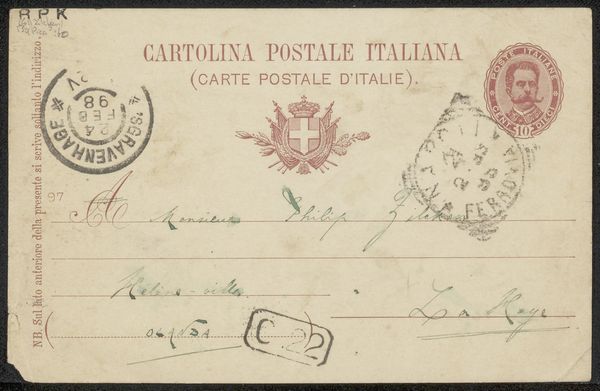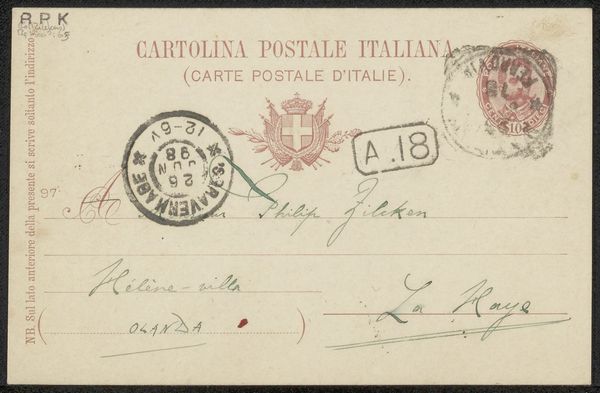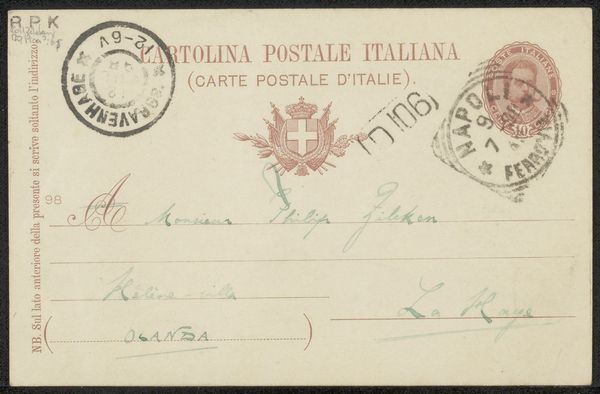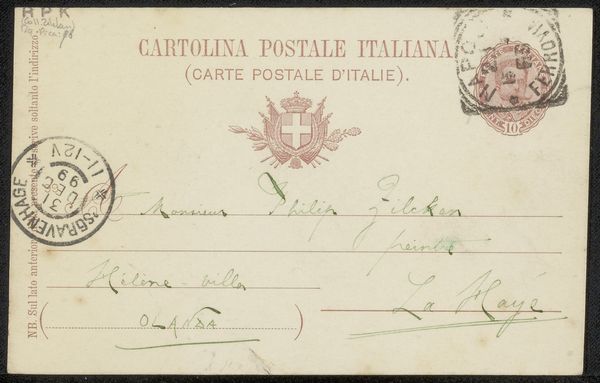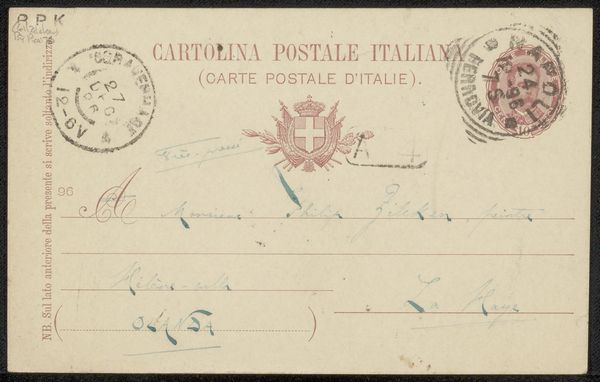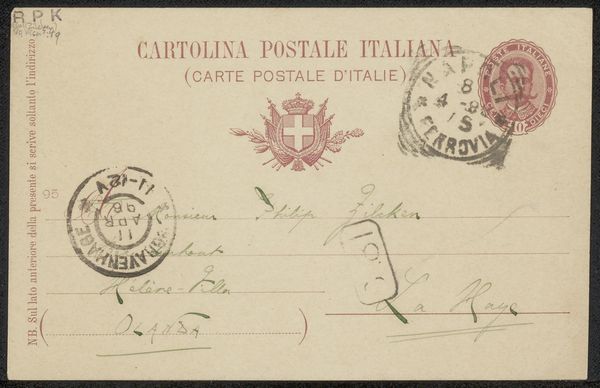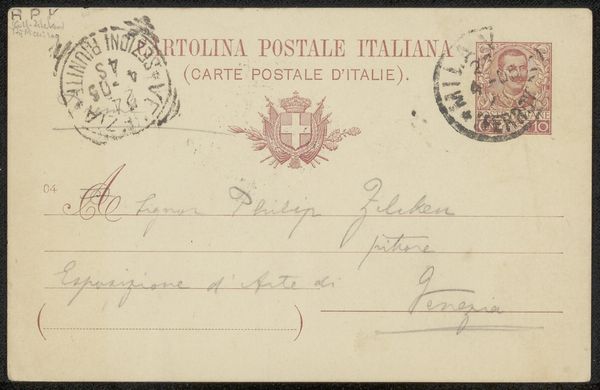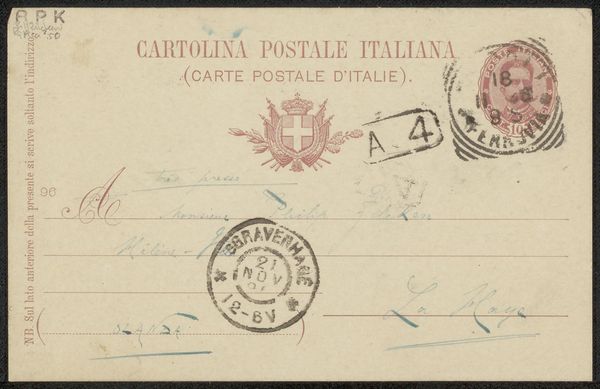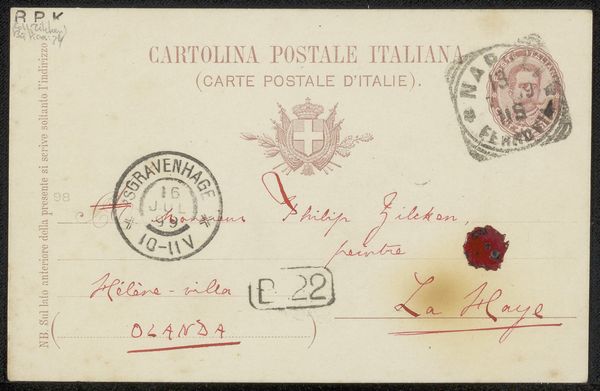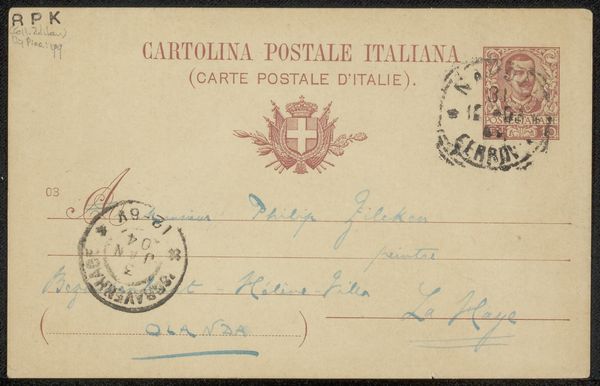
drawing, print, paper, ink
#
drawing
# print
#
pen illustration
#
pen sketch
#
old engraving style
#
hand drawn type
#
paper
#
personal sketchbook
#
ink
#
ink drawing experimentation
#
pen-ink sketch
#
pen work
#
sketchbook drawing
#
sketchbook art
Copyright: Rijks Museum: Open Domain
Curator: This is "Briefkaart aan Philip Zilcken," believed to be from around 1898, likely a pen and ink drawing. What strikes you upon seeing this card? Editor: It feels incredibly fragile and intimate, doesn't it? Almost as if we're intruding on a private thought, carefully penned and mailed long ago. The various stamps are almost overwhelming. Curator: Note the layering of inked script and stamps. The contrast creates a subtle tension. Notice how the controlled strokes of the writing are interrupted by the blurred imprints. This interplay complicates the reading experience. Editor: It is compelling. You almost have to piece it together like an archeological find. Given the date and the "Cartolina Postale Italiana" heading, how might this relate to broader political currents? Was it a form of national communication? Curator: Yes, Italy was consolidating its national identity. Standardized postal systems like this contributed to that shared civic life and national narrative. And consider the recipient—Philip Zilcken. The context would be lost if this card were sent by email today. Editor: So the materiality itself – the paper, ink, the very act of physically mailing – speaks to a specific historical moment. It's about connecting people within the social and political infrastructure of that time. Is there also anything here that points to an artistic practice beyond just communication? Curator: Absolutely, the varying line weights in the text show confidence and fluency. And though rudimentary, there is clear control displayed here. In many ways, that balance produces the visual interest of this ordinary card. Editor: It certainly does make you consider the act of communication itself, not just the message. Curator: Indeed. Viewing it reminds us how historical forces imprint themselves even on the most seemingly banal of objects. Editor: For me, it highlighted how much the act of communication has transformed. It really changes my relationship to this work knowing these elements. Curator: And for me, examining these aesthetic choices emphasizes the visual vocabulary necessary to decipher the meaning in front of us.
Comments
No comments
Be the first to comment and join the conversation on the ultimate creative platform.
